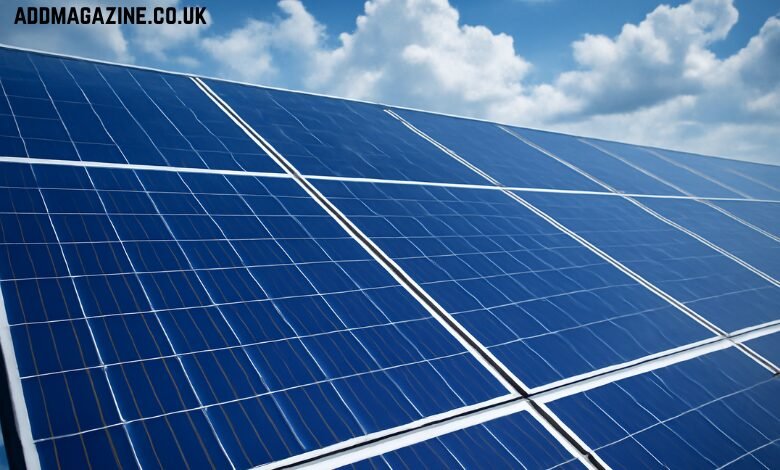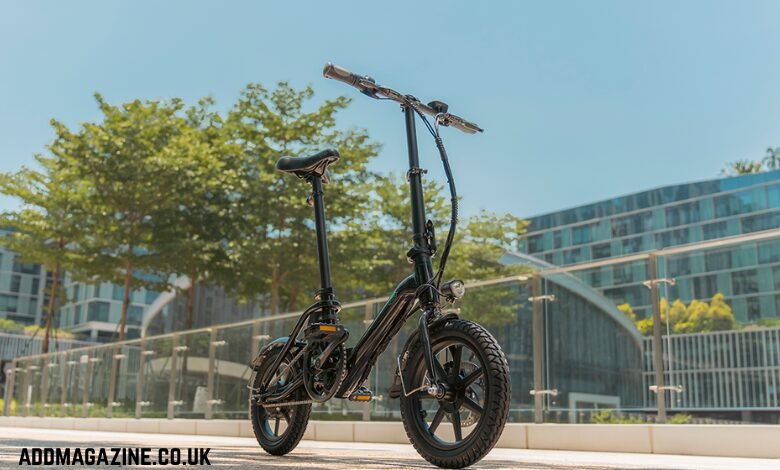Photovoltaics (PV) is one of the most rapidly growing sectors within renewable energy. Among the key players in this field, HMS Photovoltaik has carved out a niche for itself with innovative solar energy solutions. Their focus is on advancing the use of solar panels to convert sunlight into electricity, contributing significantly to reducing the carbon footprint and promoting sustainability. This blog post delves deep into the workings of HMS Photovoltaik, the technologies they employ, their impact on the environment, and how they are shaping the future of solar energy.
What is HMS Photovoltaik?
HMS Photovoltaik is a company specializing in the development, production, and implementation of solar energy solutions through photovoltaic systems. The company has become known for its commitment to providing efficient, high-quality solar panels, inverters, and other components that make up a complete solar energy system.
Photovoltaic systems, in simple terms, convert sunlight directly into electricity using solar panels. These systems have seen exponential growth over the years, especially in regions with abundant sunlight, such as Southern Europe, parts of Asia, and the United States. HMS Photovoltaik’s offerings enable homeowners, businesses, and industries to make the switch to renewable energy, reducing dependency on non-renewable sources of power.
How Do Photovoltaic Systems Work?
A photovoltaic system works by capturing sunlight using solar panels made up of photovoltaic cells. These cells contain semiconductor materials like silicon that absorb the sun’s energy. When sunlight strikes the surface of the cells, it excites electrons in the semiconductor material, causing them to flow and generate an electric current. This electrical current is subsequently transformed into usable power, capable of energizing homes and businesses.
HMS Photovoltaik ensures that their systems are optimized for maximum energy conversion efficiency. They employ advanced technology to create solar panels that combine high efficiency with exceptional durability, guaranteeing reliable performance in diverse weather conditions.
Components of a Photovoltaic System
A complete photovoltaic system typically includes several key components:
- Solar Panels (PV Modules): These are the primary component of any solar energy system, responsible for collecting sunlight and converting it into electricity. HMS Photovoltaik produces high-performance panels designed to optimize energy absorption and conversion.
- Inverters are responsible for transforming the direct current (DC) generated by solar panels into alternating current (AC), making it suitable for use in homes and businesses. The inverter is essential in this process, converting the direct current (DC) produced by the solar panels into usable alternating current (AC). HMS Photovoltaik integrates high-quality inverters that ensure optimal efficiency and reliability.
- Mounting Structures: These are the frameworks that hold the solar panels in place. HMS provides mounting systems designed for easy installation and secure positioning, whether on rooftops, open fields, or other surfaces.
- Battery Storage: To maximize the utility of solar energy, especially during non-sunny periods, energy storage solutions like batteries are used. HMS Photovoltaik provides advanced battery storage options that allow users to store excess energy for later use.
- Monitoring Systems: These systems allow users to track the performance of their solar panels, monitor energy production, and ensure the system is working efficiently. HMS offers state-of-the-art monitoring technology that provides real-time data for better management of energy consumption.
Applications and Types of Photovoltaic Systems
Photovoltaic technology is versatile and can be applied across various sectors, from residential homes to large commercial and industrial installations. HMS Photovoltaik offers solutions tailored to different applications, ensuring maximum efficiency and reliability for each type of use case.
1. Residential Solar Systems
Residential solar systems are designed for homeowners who want to generate their own electricity and reduce their reliance on the national grid. HMS Photovoltaik provides modular, scalable systems that can be customized to meet the specific energy needs of a household.
Key Benefits:
- Energy Savings: Reduced electricity bills by harnessing solar energy during the day.
- Energy Independence: Less dependence on utility providers.
- Environmental Impact: Significant reduction in the household’s carbon footprint.
2. Commercial Solar Systems
Commercial photovoltaic systems are ideal for businesses looking to cut down on operational energy costs. HMS Photovoltaik’s commercial solutions can support high energy demands, making them ideal for manufacturing plants, warehouses, and office buildings.
Key Benefits:
- Cost Reduction: Businesses can save a significant amount on their electricity bills, with potential for government incentives and tax rebates.
- Sustainability: Aligns with corporate sustainability goals, improving the brand image.
- Scalability: Commercial systems can be expanded as the business grows.
3. Industrial Solar Systems
Industrial photovoltaic systems are large-scale installations, typically used for factories, industrial sites, or even solar farms. These systems are designed to handle extremely high energy requirements and can be integrated into the power grid to provide electricity for local communities.
Key Benefits:
- High Energy Output: Suited for large-scale power generation.
- Grid Integration: Ability to supply excess power to the local grid, providing an additional revenue stream.
- Long-Term Investment: Reduced operational costs and enhanced return on investment over time.
Residential vs. Commercial HMS Photovoltaik Use Cases
When comparing residential and commercial use cases for HMS Photovoltaik systems, several factors come into play, including energy demand, system size, and scalability.
Residential Use Case
- Energy Demand: Typically lower compared to commercial systems. A residential system might range from 3kW to 10kW in capacity.
- System Size: Smaller systems, often installed on rooftops, with fewer panels and less complex configurations.
- Cost: Initial costs for residential systems are generally lower, but savings depend on energy usage patterns and available sunlight.
Commercial Use Case
- Energy Demand: Higher energy consumption, especially for larger commercial buildings or manufacturing sites. Systems typically range from 10kW to several hundred kilowatts.
- System Size: Larger, more robust installations, often requiring custom configurations and ground-mounted systems.
- Cost: Higher initial investment due to system size, but the payback period tends to be shorter due to the larger scale and energy savings.
Benefits of HMS Photovoltaik Systems
- Environmental Benefits:
- Solar energy is a clean, renewable resource that does not produce greenhouse gases or other pollutants, making it a key part of global efforts to fight climate change.
- Economic Benefits:
- While the upfront investment can be significant, the long-term savings on electricity bills provide substantial financial benefits. In addition, some regions offer incentives such as tax credits, rebates, and grants for solar system installations.
- Energy Security:
- By generating their own electricity, users are less vulnerable to rising energy costs and power outages, ensuring a stable and reliable energy supply.
- Job Creation:
- The solar energy industry creates jobs in manufacturing, installation, and maintenance, which supports local economies.
Performance Expectations from HMS Photovoltaik
Performance expectations from HMS Photovoltaik systems are high due to their advanced technology and efficient design. Key metrics to consider include:
- System Efficiency: How effectively the system converts sunlight into usable electricity. HMS Photovoltaik systems boast high conversion efficiencies, typically above 20%, with some top-tier models reaching 22%.
- Durability: Solar panels are designed to last for decades, with most products offering a 25-year warranty. HMS ensures that their panels are robust enough to withstand various weather conditions, including snow, rain, and hail.
- Return on Investment (ROI): Depending on location, energy usage, and system size, customers can expect to see a return on investment within 5 to 10 years. After this period, the energy produced is essentially free, resulting in substantial long-term savings.
Technical Specifications and Efficiency Metrics
Below is a sample table outlining the technical specifications and efficiency metrics for HMS Photovoltaik systems:
| Component | Specification |
|---|---|
| Solar Panel Efficiency | 20% – 22% |
| Power Output (per panel) | 300W – 400W |
| Inverter Efficiency | 95% – 98% |
| Battery Storage (if included) | 5 kWh – 20 kWh (depending on system size) |
| Temperature Coefficient | -0.4% per °C |
| Warranty | 25 years (solar panels), 10 years (inverters) |
| Operating Temperature | -40°C to 85°C |
| Payback Period | 5 – 10 years |
Conclusion
HMS Photovoltaik is at the forefront of the renewable energy revolution. Through its high-quality photovoltaic systems, the company is helping to reshape the global energy landscape by making solar power accessible, efficient, and cost-effective. Whether for residential, commercial, or industrial applications, HMS Photovoltaik offers scalable and reliable solutions that can meet the energy needs of various sectors.
By investing in photovoltaic systems from HMS Photovoltaik, individuals and businesses can reduce their carbon footprint, lower energy costs, and contribute to a cleaner, more sustainable future. As solar power continues to grow in importance, HMS is well-positioned to lead the way in providing innovative, high-performance energy solutions.




